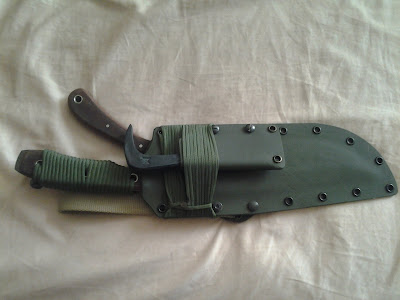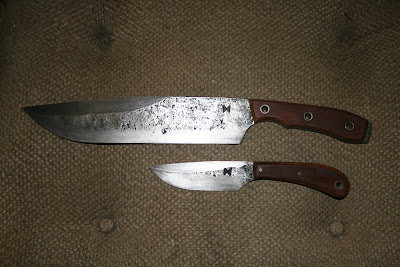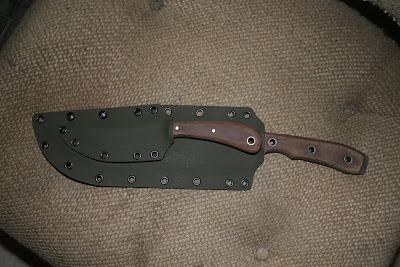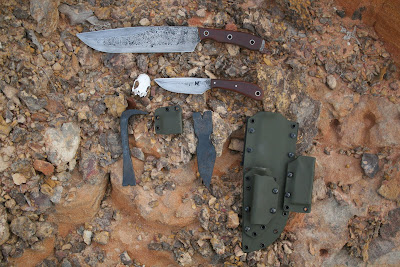This was a commission from a soldier who ran into up close and personal trouble the last time he was in Afghanistan and wanted to be better prepared the next time he goes. We discussed this project for a good while, and I have to say that if I was a soldier stationed in the rockbox, I'd want him to be the guy in charge of me.
He wanted a pair of blades, a big fighter that could reach out and touch someone and a smaller utility that would still be good in a scrape. He wanted the big one to have an exposed pommel and wanted both of them to have fully sharpened clips.
This is what I sketched out:
He approved and I got on it when I could. Somewhere along the way they got named Mightor and Little Rok as a nod to his time spent living in caves in Afghanistan. Mightor ended up with a 9 3/4" blade that is 2 1/8" wide and an overall length of 15 3/8". Little Rok has a 4" blade and an overall length of 8 3/4". The steel they were forged from was 1/4" 5160, triple normalized, triple hardened, and triple tempered.
Here they are forged out:
Little Rok has lightening holes to keep it from being overly handle heavy (though it ends up balancing at the first handle pin), but Mightor needed to balance out that long blade so only the rivet holes were drilled. With the handle slabs on, it balances right at the touchmark.
Here they are after stock removal, ready for heat treatment:
Natural brown canvas Micarta was the choice for the handle slabs and olive drab Kydex for the sheaths.
Along the way, he decided he needed a flat prybar. I suggested a roller head prybar as well (his term for such is a cat's paw; he gets the name from his grandpa and I get roller head from my dad) and he agreed. I wasn't quite sure about how to sheath those, but came up with this:
And all together:
After sharpening it all up where both blades will shave coming or going and oiling everything down, it was time for some nicer pictures.
I really like the shape of Little Rok. When I get a chance, I need to make a single edged version for my EDC. As a double-edge, it would work quite viciously with pikal techniques.
[
He's a lefty like me, so the roller head prybar is built for use with the left hand.
He's done some rearranging of the rig now that it's in his hands. I'll get those uploaded and posted later on.













































